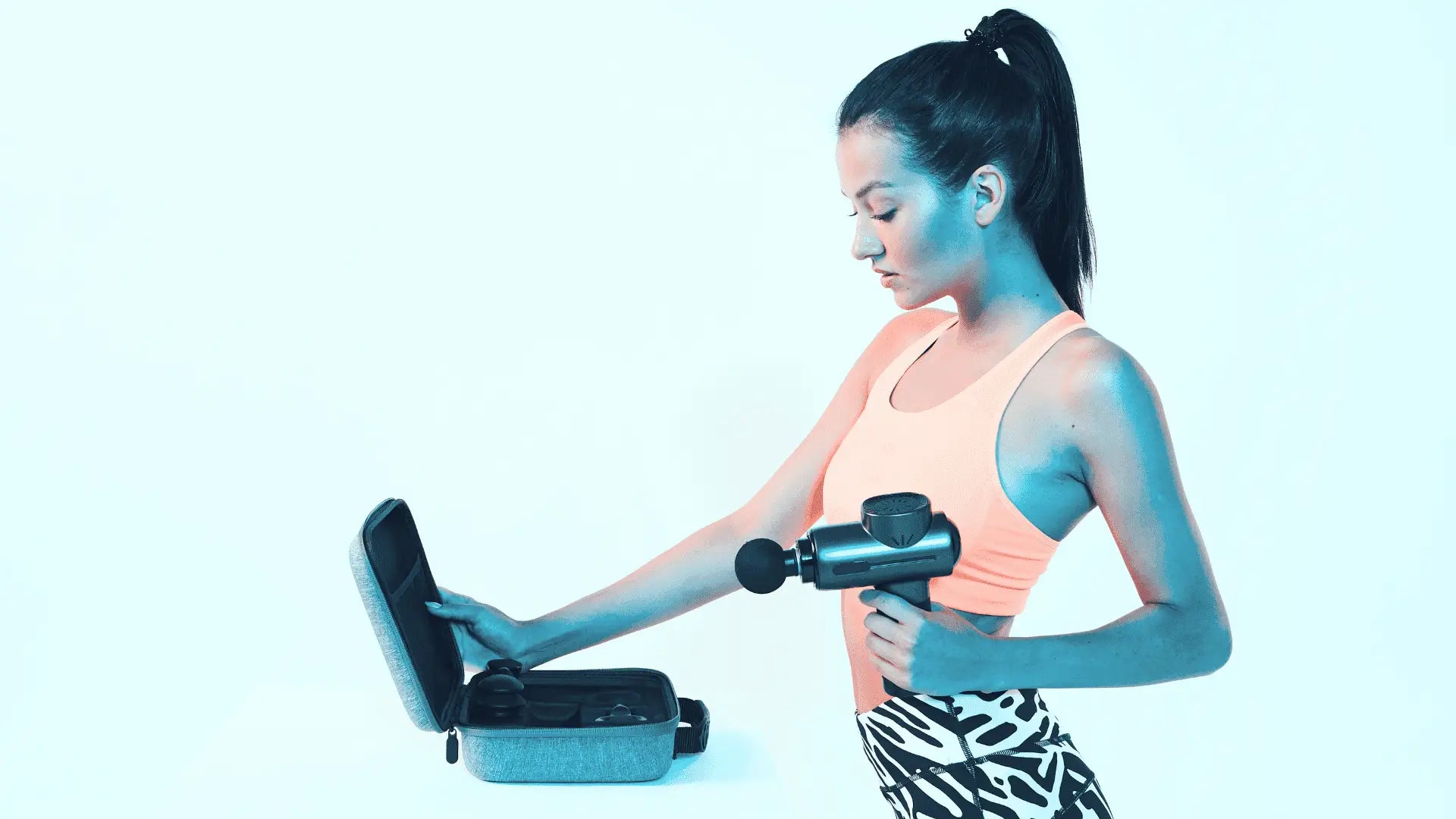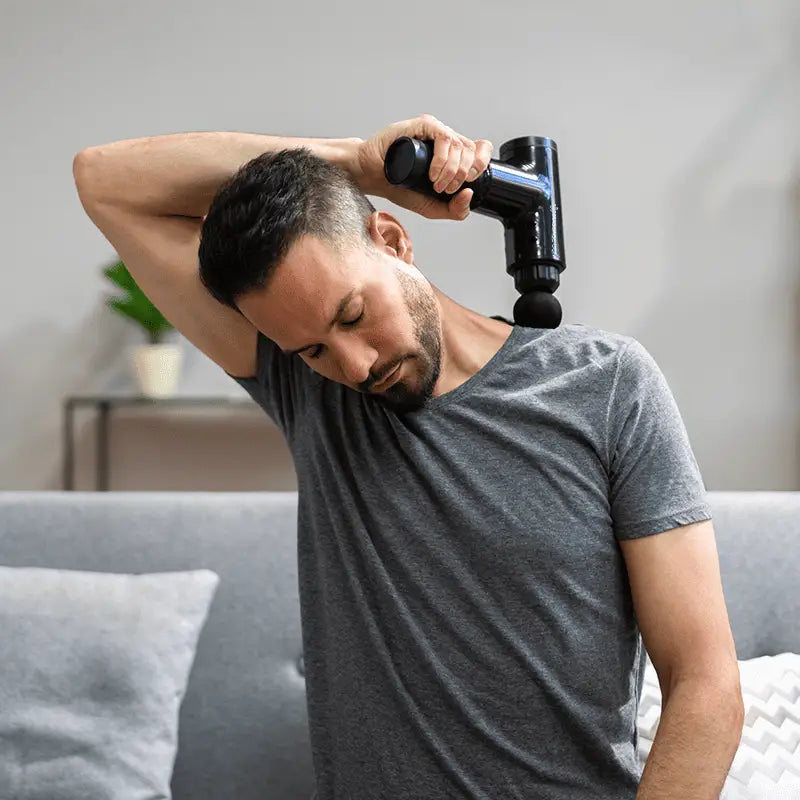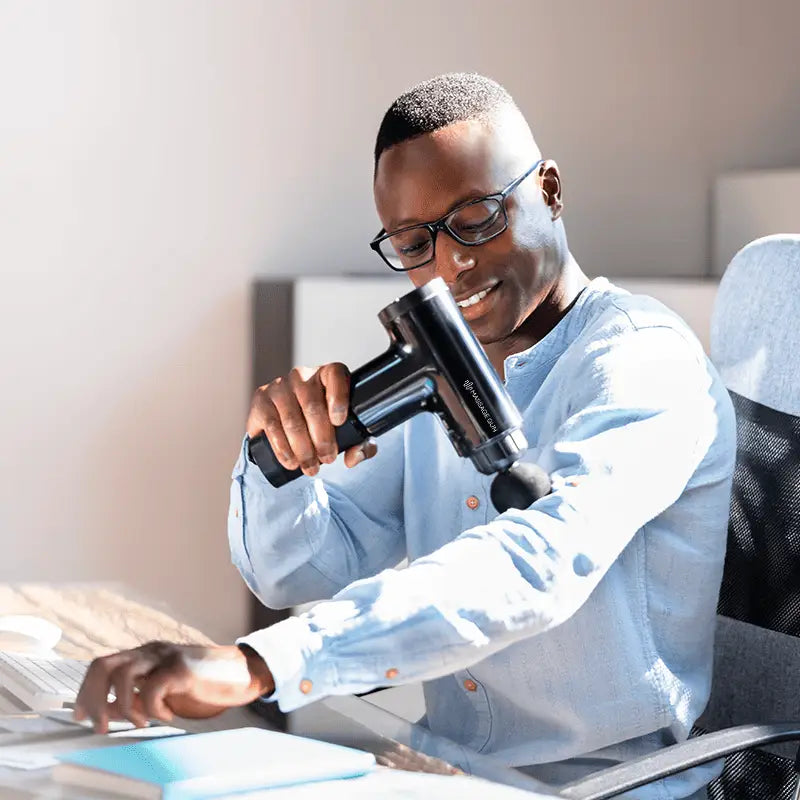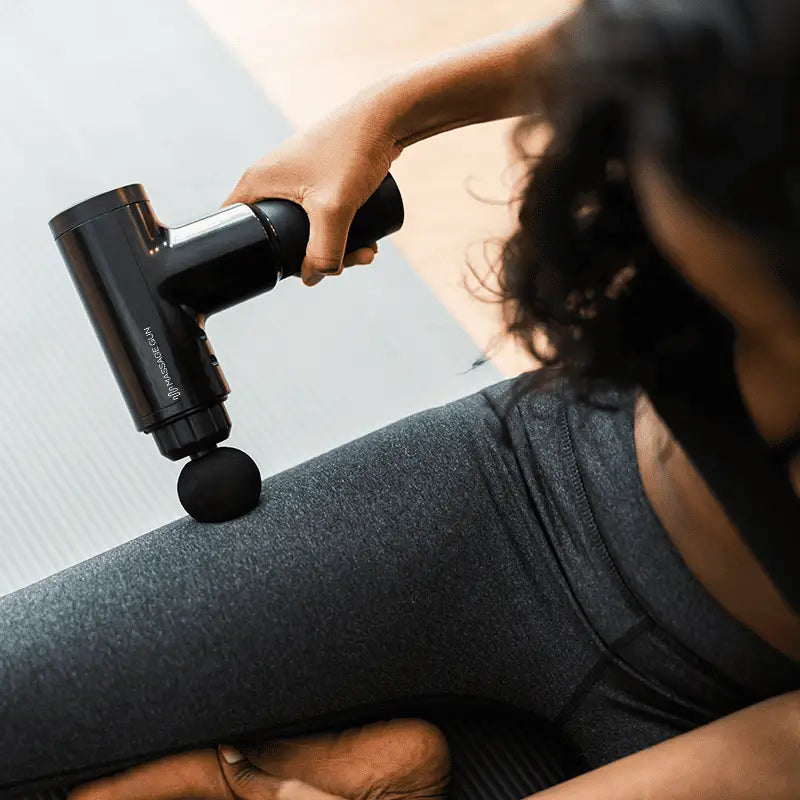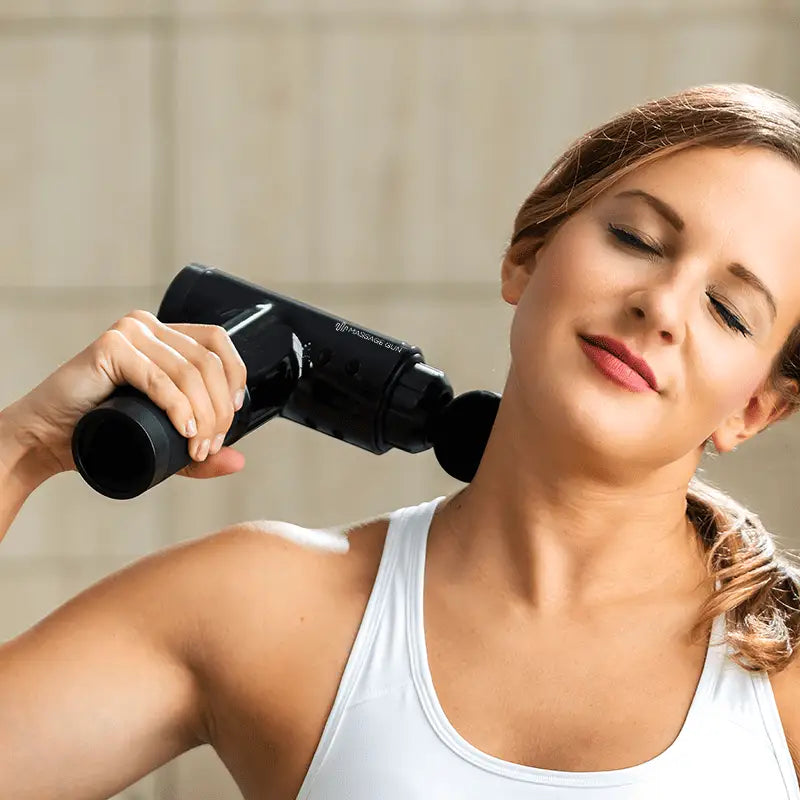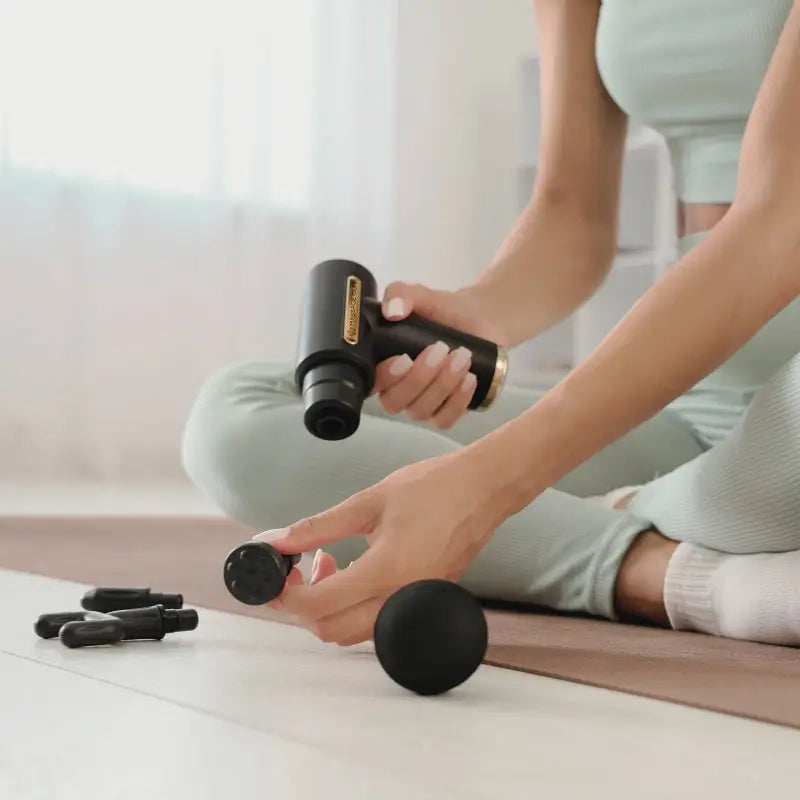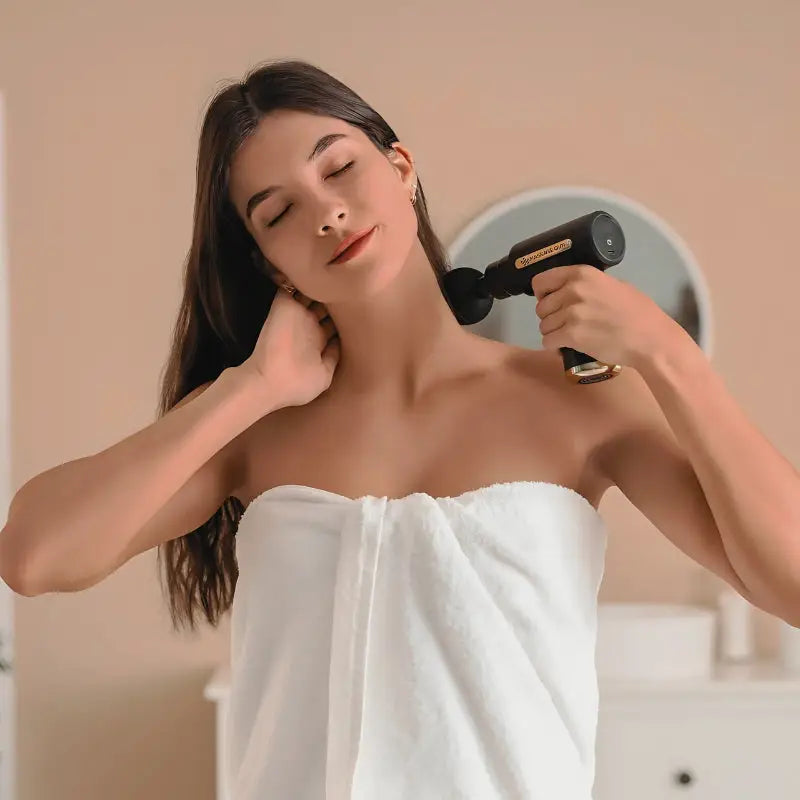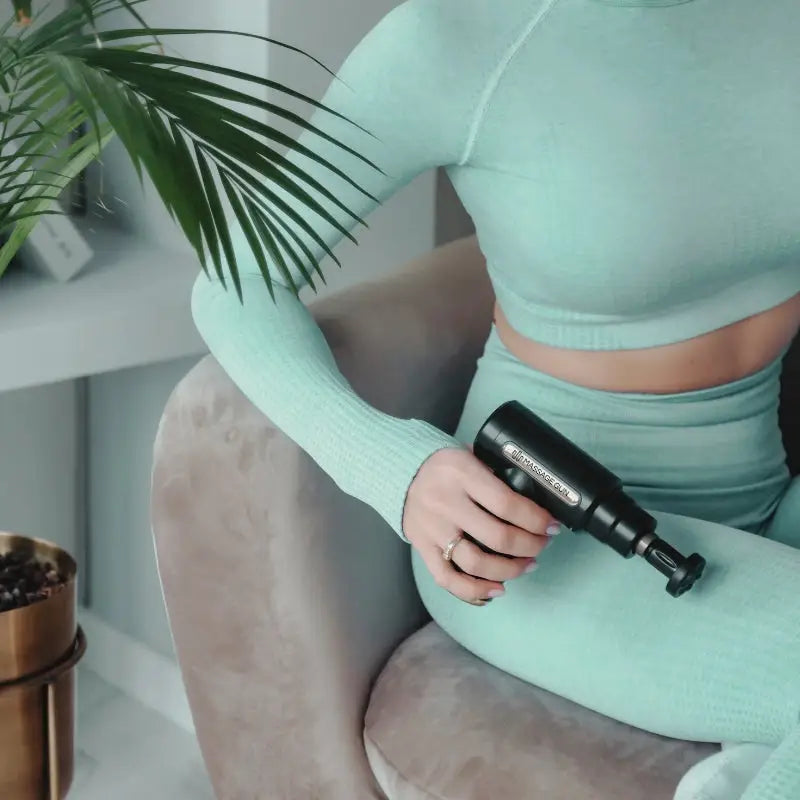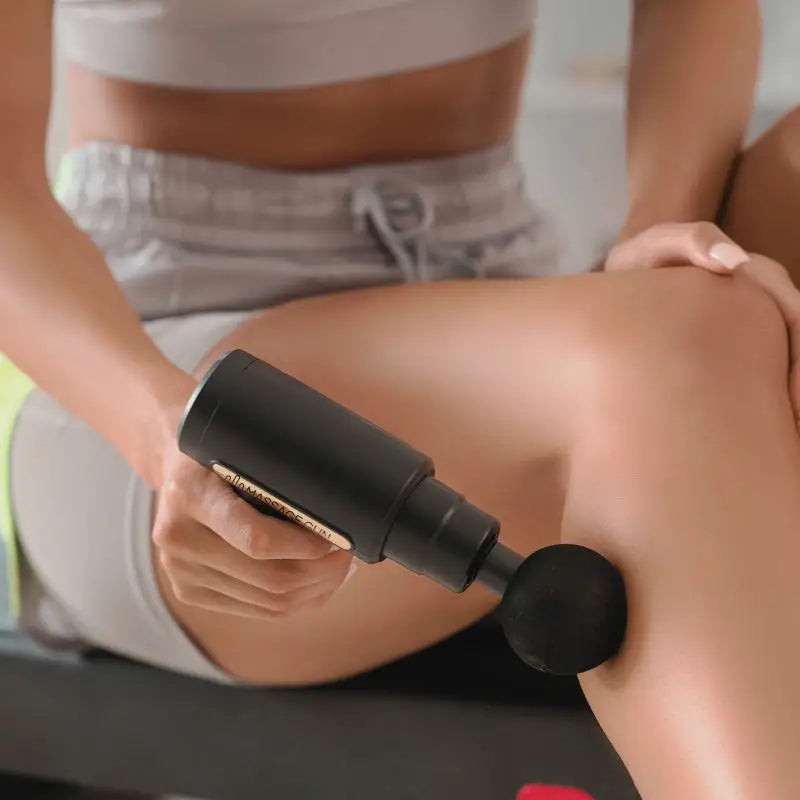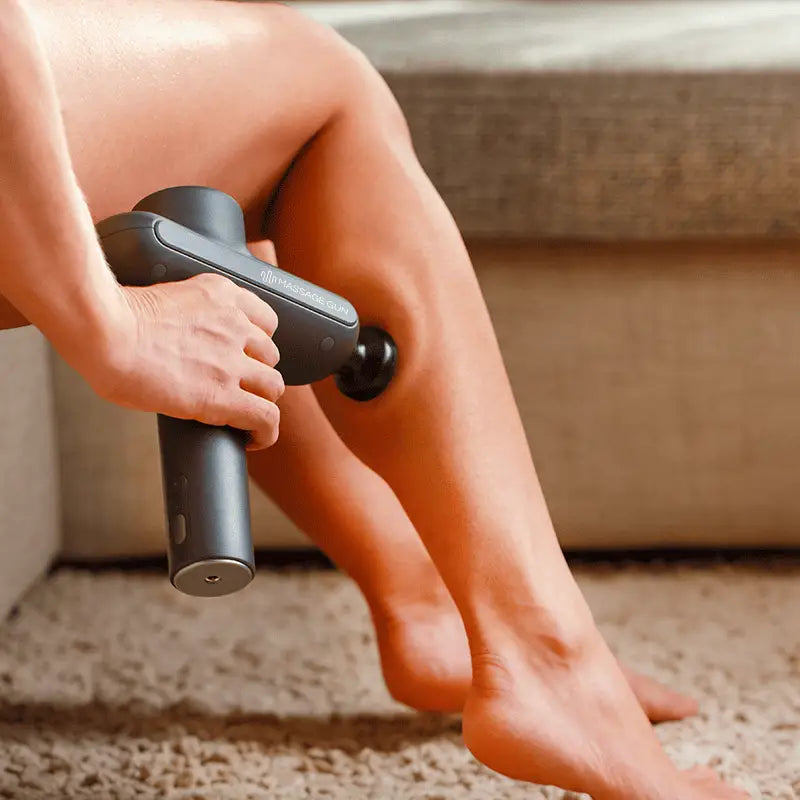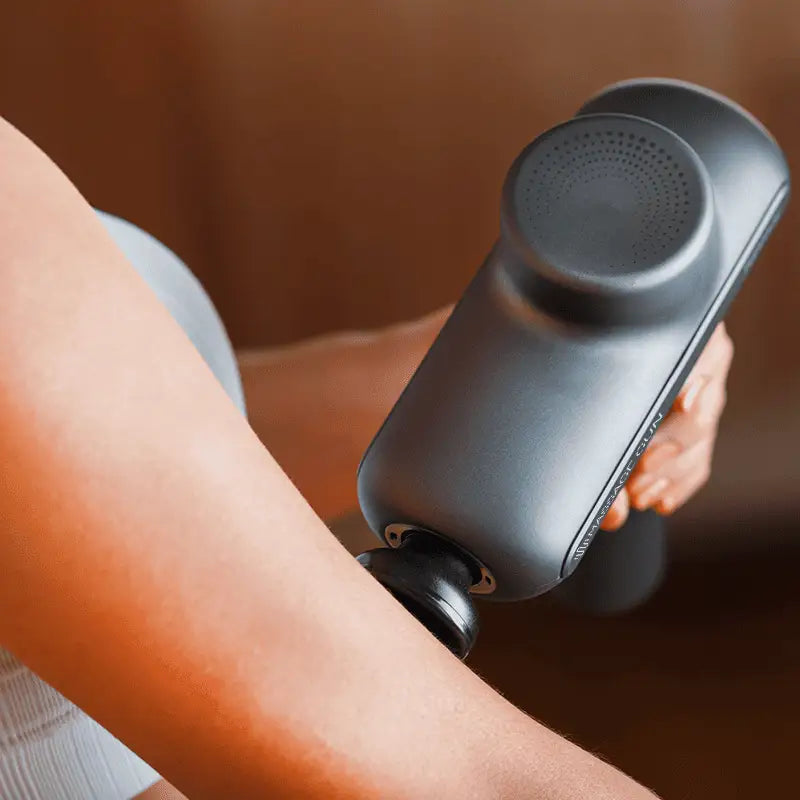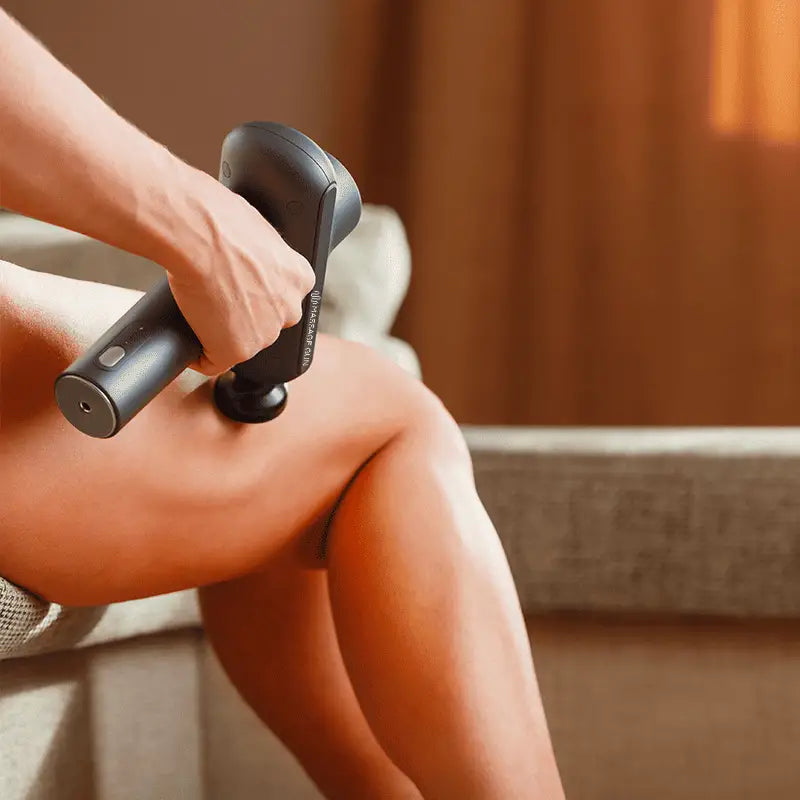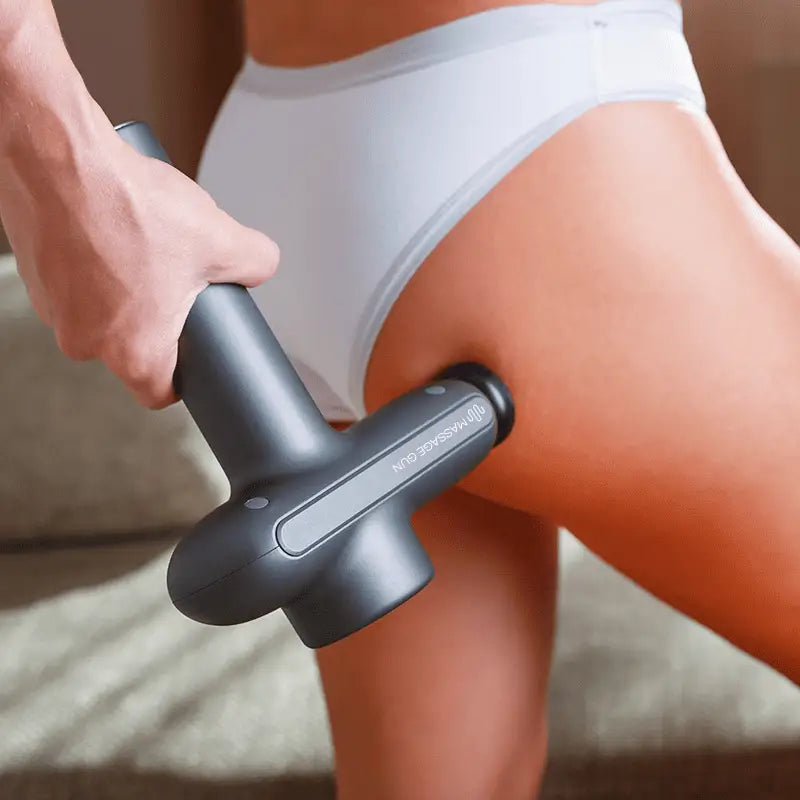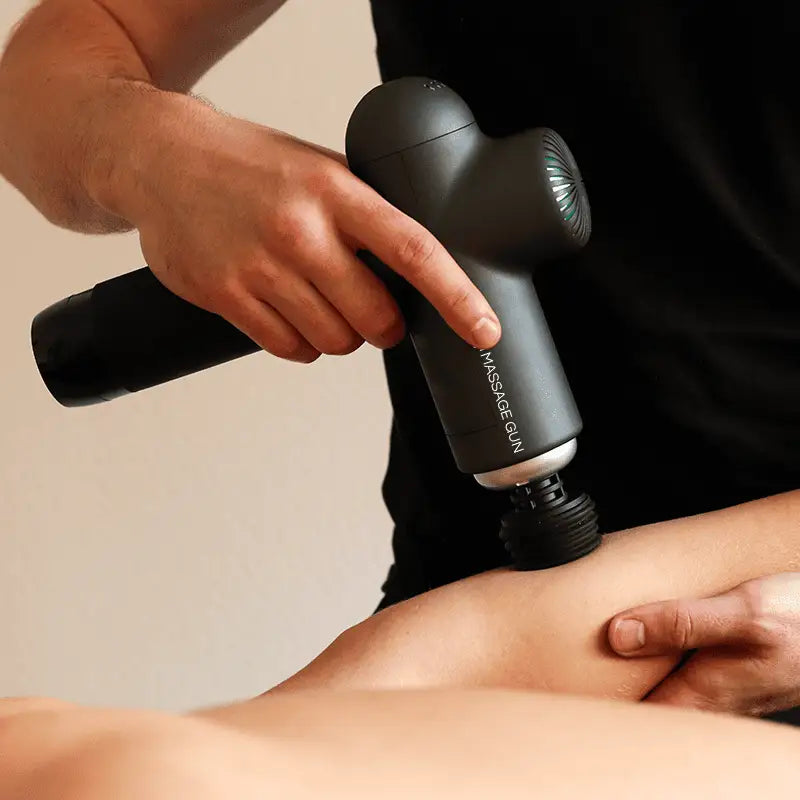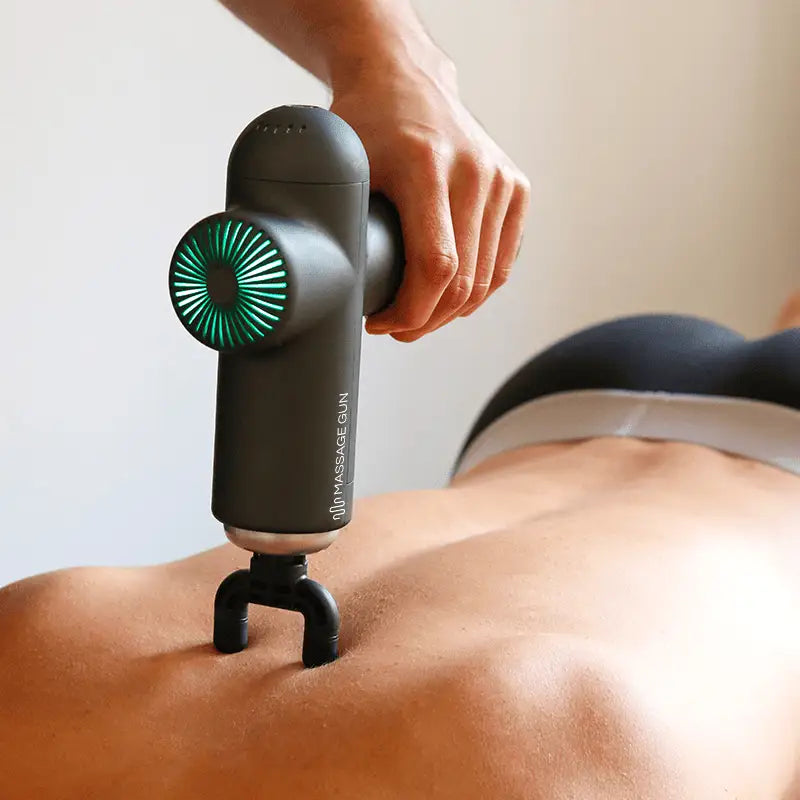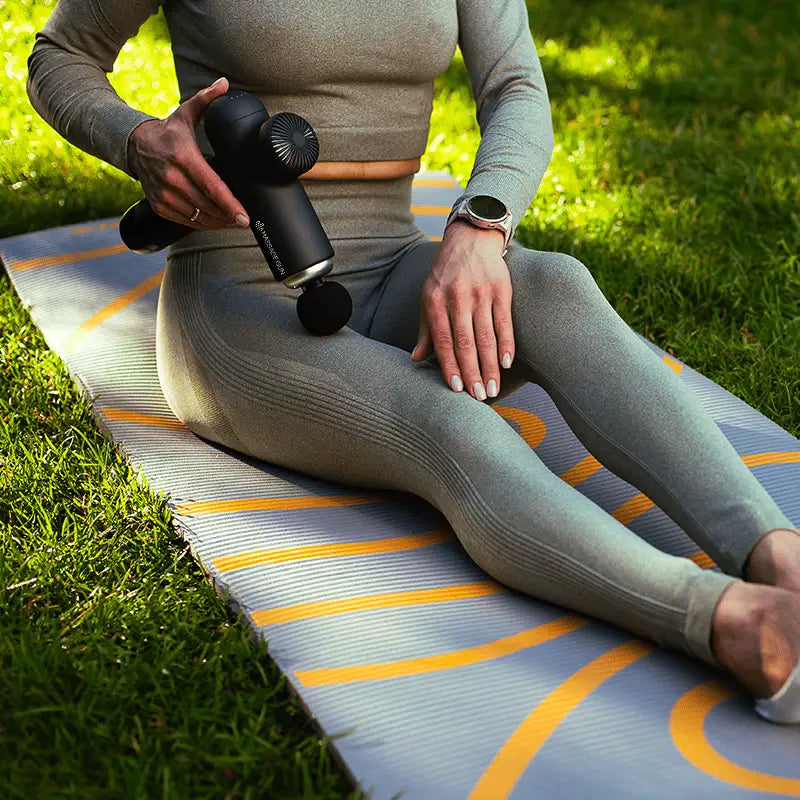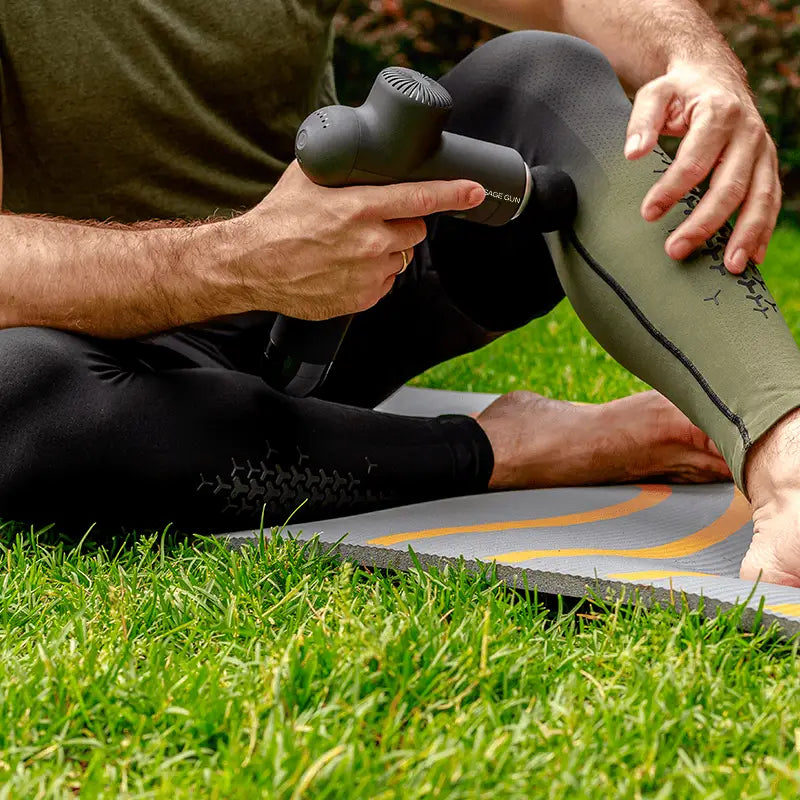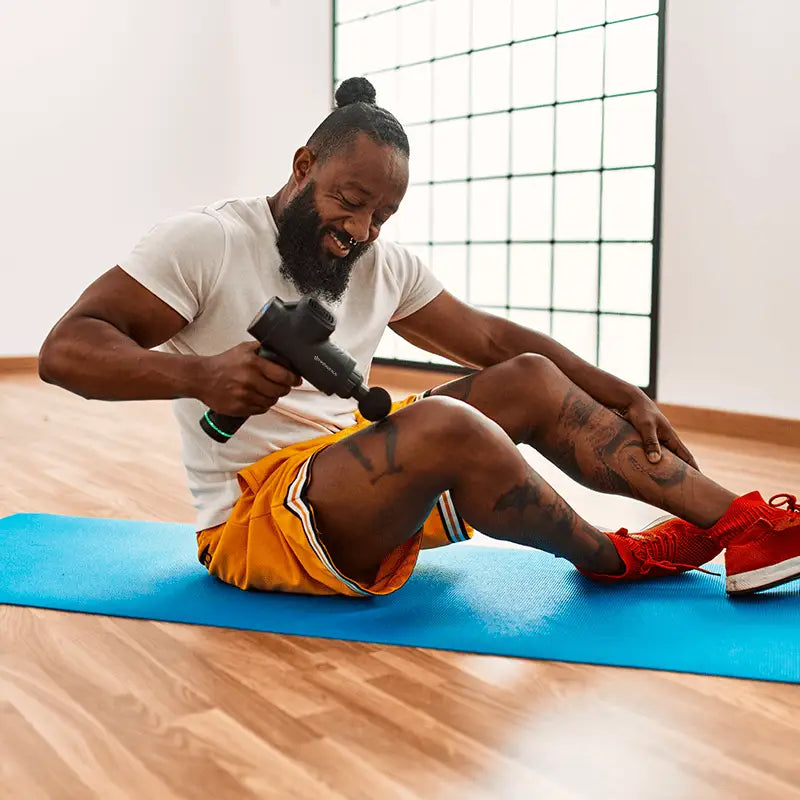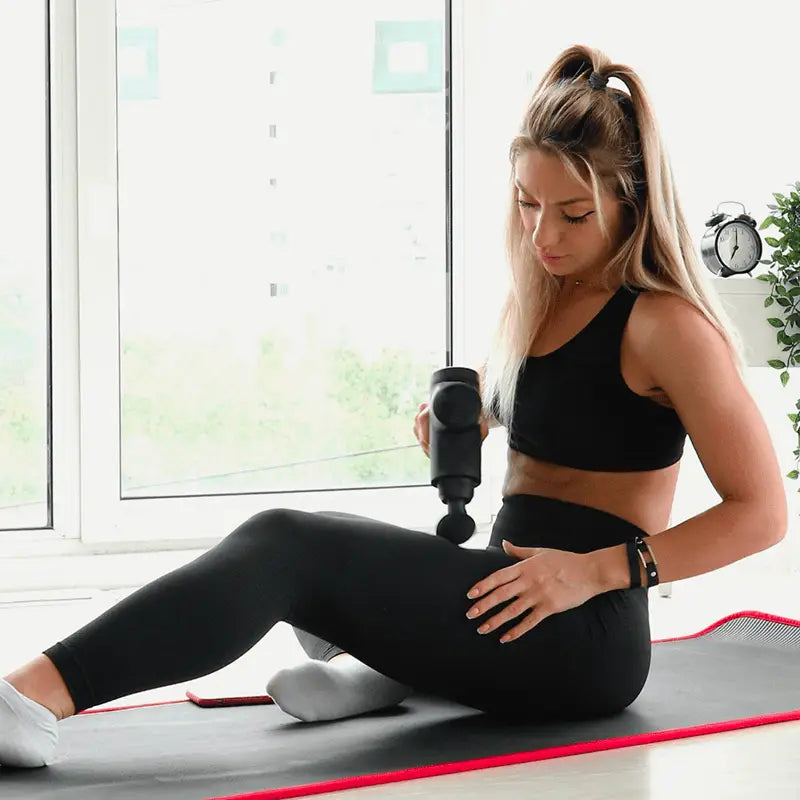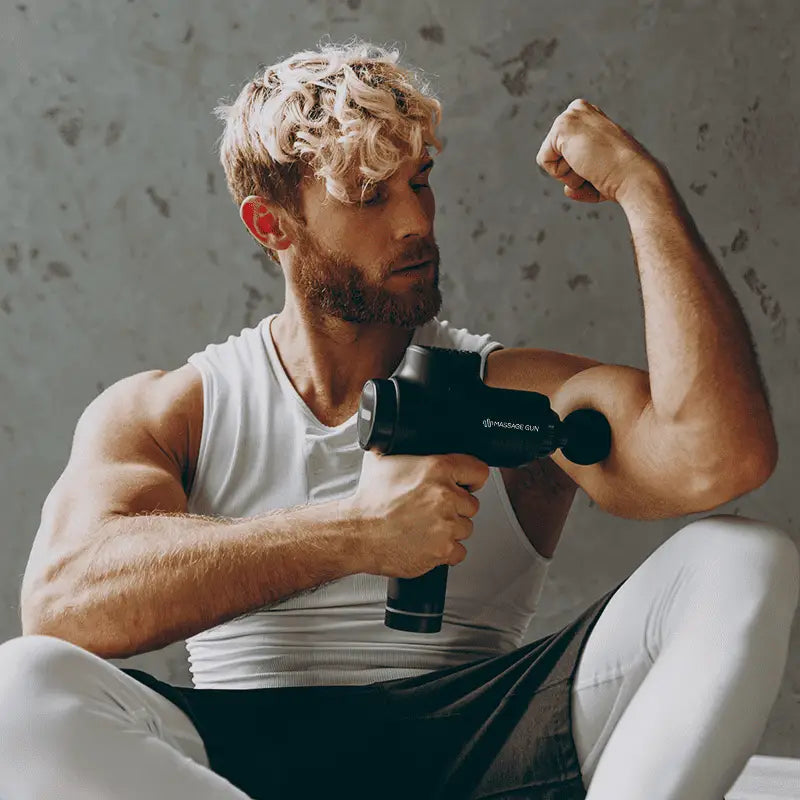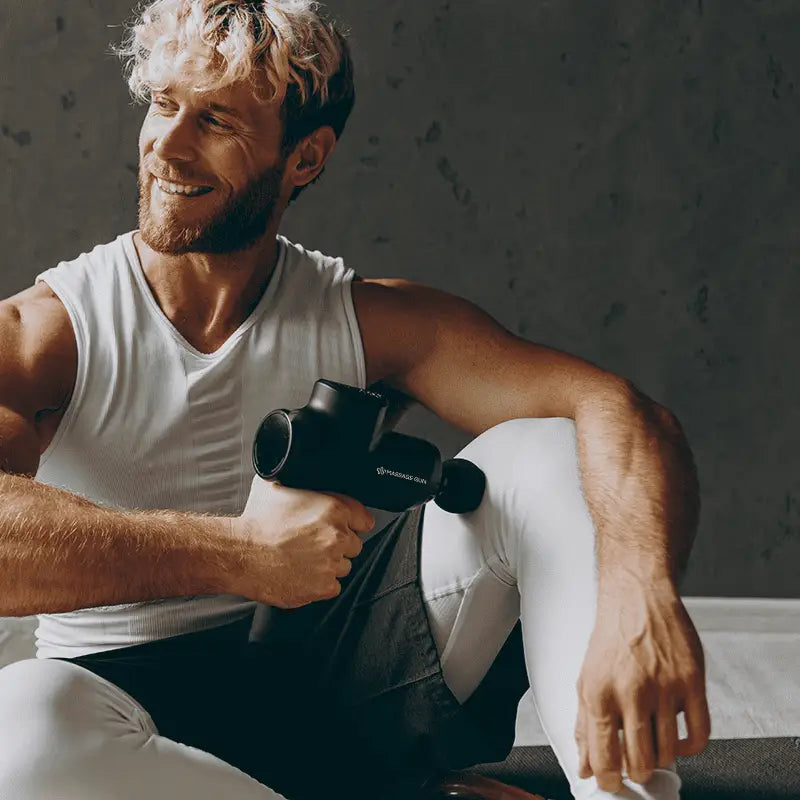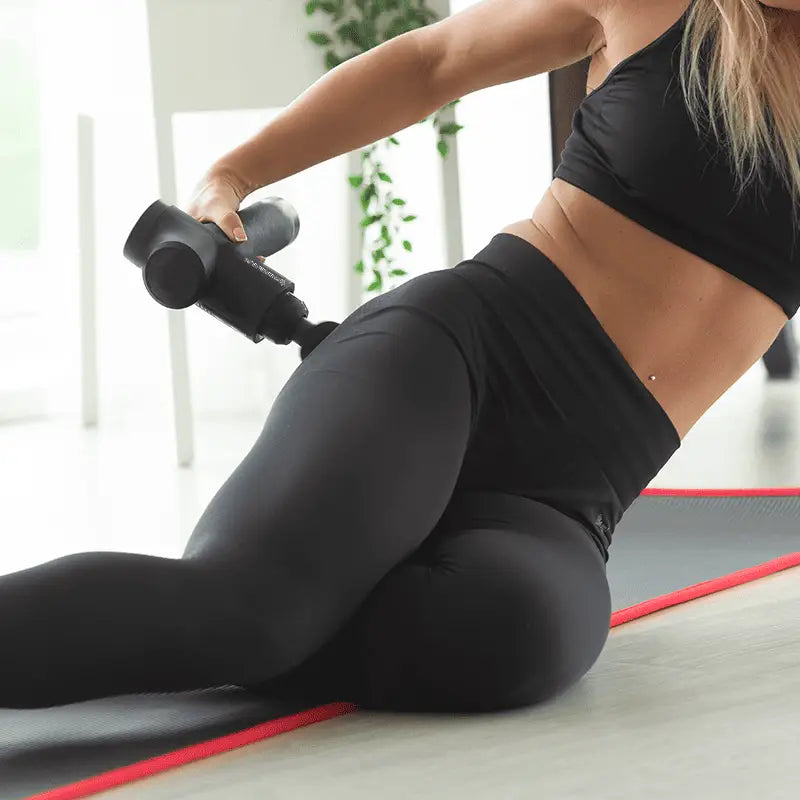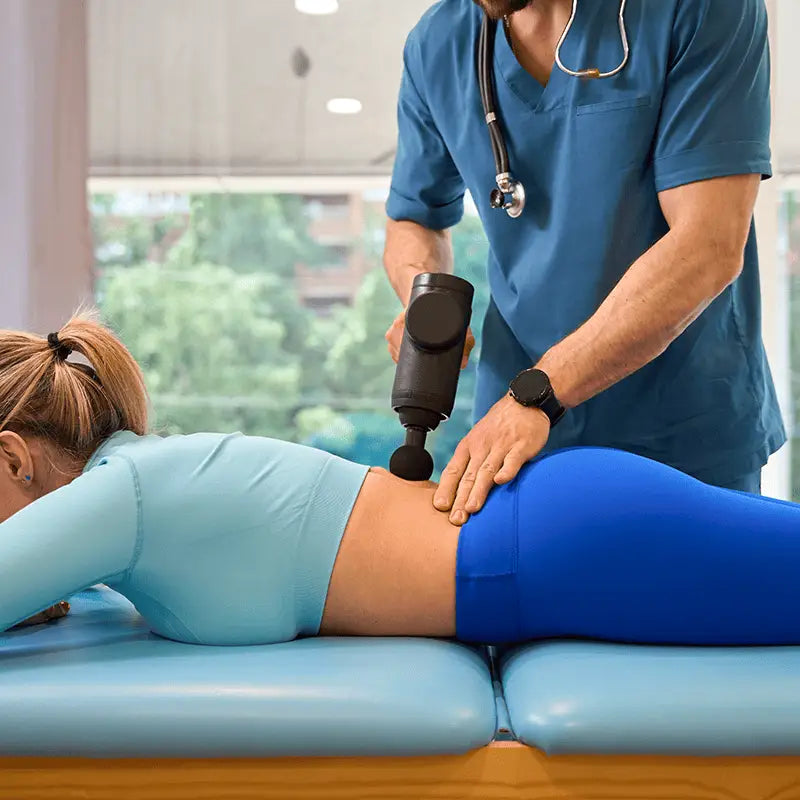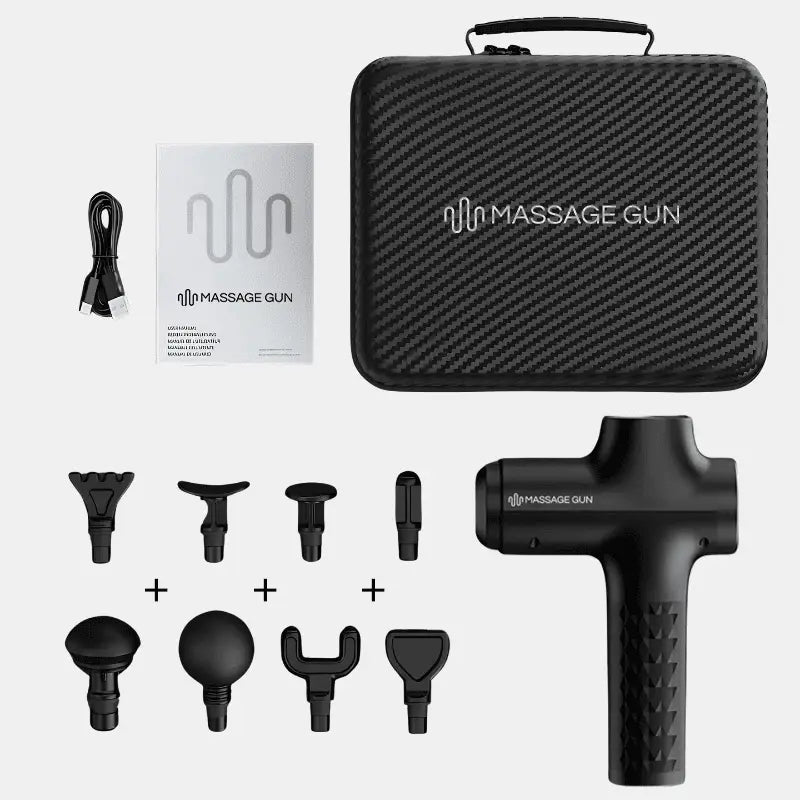Massage guns are increasingly popular for recovery and wellness. These handheld devices provide percussion therapy, applying rapid pulses to muscles to reduce muscle tension, soreness, and stiffness.
With benefits ranging from improved range of motion to delayed onset muscle soreness (DOMS) relief, they’ve become essential tools in many fitness routines. But how do massage guns work, and are they effective?
This complete guide will explore their scientific benefits, proper usage, and how they impact physical activity and recovery.
What is a massage gun?
A massage gun is a handheld massager designed to deliver percussion therapy to target soft tissue. These devices, like Theragun and similar massage gun therapy tools, work by sending rapid, percussive vibrations deep into muscles to alleviate tension and enhance musculoskeletal health.
Theragun devices, in particular, have gained popularity for their advanced technology and customizable attachments, allowing users to fit different heads to the device for specific needs, such as deep tissue massage or lighter treatments.
The science behind percussive therapy
Percussion therapy delivers intense, localized pressure to the muscles, increasing blood flow and oxygen delivery to the targeted area. This physical therapy method promotes recovery by reducing lactic acid buildup and preventing muscle knots and trigger points.
According to a systematic review in the International Journal of Sports Medicine, percussive therapy can reduce muscle tension, improve soft tissue health, and help alleviate DOMS. By incorporating percussion massage into your post-exercise routine, you can enhance your body's natural recovery processes.
Physiological effects of massage guns
The benefits of massage guns include increased blood flow and the release of muscle tension. Massage treatment with a percussion gun can aid in sports rehabilitation by stimulating blood vessels and promoting the removal of lactic acid.
Over time, regular use of these products can help improve range of motion and reduce muscle soreness. These devices can also address fascia issues, helping to relax soft tissue and improve the pliability of musculoskeletal structures, which in turn supports athletic performance.
Neurological impact of percussive therapy
In addition to the physical benefits, percussive therapy massage has a profound impact on the nervous system. The rhythmic vibrations stimulate sensory pathways, reducing pain signals to the brain. This effect can help reduce pain, improve the feeling of well-being, and support mental relaxation.
For those experiencing chronic pain, the regular use of massage gun therapy may improve long-term outcomes by modulating the body’s pain response and facilitating a more relaxed state.
What are the benefits of massage guns?
The primary benefit of massage guns is their ability to quickly reduce muscle soreness and enhance muscle strength recovery. By delivering targeted vibrations, they help reduce pain associated with post-exercise muscle stiffness and lactic acid buildup.
This treatment is especially effective for athletic individuals looking to maintain optimal fitness levels. Other benefits include better movement, reduced risk of injury, and more efficient recovery from strength training sessions.
Mental health benefits
While massage guns are typically used for physical recovery, they also offer mental health benefits. By releasing muscle tension and promoting relaxation, they can reduce feelings of stress and anxiety.
This connection between physical activity and mental wellness is crucial for maintaining a balanced, healthy lifestyle. Using a massage gun after a workout or at the end of a stressful day can bring both the body and mind into a more relaxed state, contributing to overall wellness.
Comparing massage guns to other recovery tools
Massage guns provide a more targeted and efficient approach compared to other recovery tools like foam rollers or traditional body massage. For example, handheld massagers such as Theragun or MassageGun® can penetrate deeper into the muscle tissue, making them more effective for treating muscle knots, trigger points, and soft tissue damage.
Compared to foam rollers, massage guns offer more precision and flexibility, especially for hard-to-reach areas like the neck and shoulders. Physical therapists also recommend massage guns for their ability to reduce muscle tension and speed up recovery.
Long-term benefits and risks of overuse
Long-term use of massage guns can improve athletic performance by keeping muscles pliable and reducing the risk of injury. However, overuse of a massage gun can cause damage to soft tissue, especially if used incorrectly or on sensitive areas.
The dangers of overuse include bruising and soft tissue damage, particularly in areas with existing injuries. Proper usage of the attachments is key, and it's essential to follow safety guidelines, such as limiting use to 2-3 minutes per area and avoiding bony areas.
How to use a massage gun correctly?
To use a massage gun properly, begin by applying it to large muscle groups like the thighs or back. Slowly move the device across the muscle, avoiding staying in one spot for too long.
Adjust the motor settings and attachments based on your treatment needs, whether you're targeting deep tissue or providing light relief. For best results, integrate vibration therapy into your post-workout routine, using it after activities like strength training to help reduce lactic acid and enhance muscle recovery.
Should you invest in a massage gun?
If you regularly experience sore muscles or tightness, a massage gun can be an excellent addition to your recovery routine. Whether you choose a Theragun or another percussive therapy device like MassageGun®, make sure it includes adjustable settings and attachments for different muscle groups.
By incorporating vibration therapy into your fitness routine, you can expect quicker recovery, better performance, and an overall improvement in your wellness. However, if you have certain conditions like musculoskeletal disorders or soft tissue injuries, consult a physical therapist before using a massage gun.
Frequently asked questions
1. How do massage guns work?
Massage guns work by using percussive therapy, delivering rapid, targeted vibrations to the muscles. This technique helps increase blood circulation, reduce muscle tightness, and ease soreness by stimulating the lymphatic system. The power of the device, combined with its customizable attachments, allows for both deep and gentle treatment, depending on the muscle group.
This practice helps improve overall movement and promotes faster recovery for athletes and everyday users. Massage therapists and health care professionals often recommend massage guns as part of a comprehensive recovery plan.
2. What are the benefits of using a massage gun?
The primary benefit of using a massage gun is the ability to reduce muscle tightness and improve movement after physical activity. The device helps decrease soreness by breaking down lactic acid and enhancing blood circulation.
Additionally, massage guns can help treat common muscle issues like knots and stiffness, providing quick and effective pain relief. They are an excellent option for professional massage sessions or for personal recovery after a post workout routine.
The evidence supports the use of massage guns in both strength and conditioning and general fitness routines.
3. Can a massage gun help with sore muscles?
Yes, a massage gun is highly effective for treating sore muscles. By applying post-exercise pressure using gentle or more intense settings, it improves blood circulation and reduces the buildup of lactic acid, helping to ease soreness.
The vibrations from the device help the body quickly release tension in muscles, offering both immediate and long-term pain relief. Many athletes perform massage gun sessions after intense training to accelerate recovery and decrease the potential for muscle injury.
4. Are massage guns safe to use every day?
Massage guns are generally safe for daily use when used properly. It’s important to adjust the power settings based on the type of muscle being targeted and apply the appropriate attachment for specific needs, such as deep tissue or gentle skin massage.
Using the massage gun regularly helps increase muscle recovery and promote better overall health care. However, for users with medical conditions, consulting a professional massage therapist or health care provider is advised to ensure safety and avoid any potential risks.
5. Can a massage gun help with injury recovery?
Massage guns can be an effective tool in treating minor injuries like muscle strains and tightness, improving movement and reducing pain. By increasing blood circulation, they help deliver oxygen and nutrients to the injured tissue, promoting faster healing.
While they are beneficial in post-injury recovery, they should be used under the guidance of a medical or massage therapist for more serious injuries to ensure the treatment does not aggravate the condition. Their ability to ease muscle tightness makes them a great complement to strength and conditioning programs.
6. How should I use a massage gun for best results?
To use a massage gun for optimal results, it’s important to choose the right attachment and intensity setting based on the muscle group being worked on. For larger muscles, you can apply more intense vibrations, while smaller, more sensitive areas should be treated with a gentle approach.
Massage guns can be used both post workout and as part of a daily routine to help reduce muscle tightness. Regular use can improve overall muscle health, increase flexibility, and decrease recovery time, making it a vital tool for both athletes and fitness enthusiasts.
7. What is the difference between a massage gun and a foam roller?
A massage gun and a foam roller both offer benefits for muscle recovery, but they differ in how they deliver their treatment. A massage gun provides more precise post-exercise therapy by targeting specific areas with explosive bursts of vibration, allowing for deeper penetration into the soft tissue.
Foam rollers offer a broader option for recovery but lack the power and precision of a massage gun. Athletes often choose massage guns to treat muscle knots and trigger points because they can quickly hit specific areas that need attention.
8. Can a massage gun help reduce lactic acid buildup?
Yes, massage guns help reduce lactic acid buildup by increasing blood circulation and promoting the release of tension in the muscles. When used after intense exercise, massage guns speed up the removal of lactic acid, helping you feel less sore and perform better in subsequent workouts.
This process aids in post-exercise recovery, ensuring that muscles are less prone to fatigue and stiffness. Many athletes add massage gun therapy to their post workout routines to maintain peak fitness levels.
9. Are massage guns good for improving flexibility?
Massage guns are excellent for improving flexibility by loosening tight muscles and improving movement in the joints. By targeting areas of muscle tightness with the right attachment, the vibrations help release tension and stretch the muscles, leading to improved range of motion.
Regular use of a massage gun can also help increase muscle pliability, making it easier to stay fit and avoid injuries during workouts. Flexibility is key to a healthy, active life, and adding a massage gun to your routine can support long-term mobility.
10. How does a massage gun reduce muscle pain?
A massage gun reduces muscle pain by stimulating blood circulation and relaxing the soft tissue around the sore area. By delivering quick pulses of pressure, the gun helps release muscle tightness and break down lactic acid, easing the pain.
Massage therapist practices have long used similar methods to provide pain relief, and the massage gun offers a professional-level option for home use. Its ability to target specific areas ensures that you can treat soreness effectively, helping you return to your normal activities with reduced discomfort.


